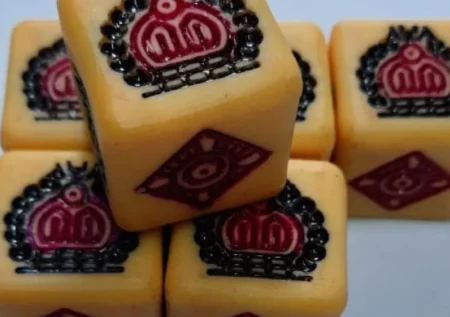

Jhandi Munda, also known as “Katti” or “Ludo”, is a popular traditional Indian game that has been played for generations. This game of skill and luck is played with six cowrie shells and a small wooden board, and is enjoyed by people of all ages.
The objective of the game is to be the first player to place all of their cowrie shells on the board in the designated finishing positions. Players take turns rolling the cowrie shells, and use the resulting combination to move their pieces on the board.
Jhandi Munda is a simple yet challenging game that requires players to strategize and think ahead in order to outsmart their opponents. It is also a great game for families and friends to play together, as it promotes teamwork and camaraderie.
In addition to its entertainment value, Jhandi Munda also holds cultural and historical significance. The game is believed to have originated in ancient India, and has been passed down through generations as a part of the country’s rich cultural heritage. It is also often played during important religious and cultural festivals, such as Diwali and Navratri.
The rules of Jhandi Munda are simple and easy to understand. The game is played with two to four players, and each player is given a set of six cowrie shells. The game board is divided into a grid of squares, with each player’s starting position marked at one corner of the board.
To begin the game, players take turns rolling the cowrie shells. The combination of the cowrie shells determines how many spaces the player can move their pieces on the board. For example, if a player rolls three “heads” and two “tails”, they can move their pieces three spaces.
Players can move their pieces in any direction, but they cannot move onto a space occupied by another player’s piece. They also cannot move past the finishing positions at the opposite end of the board.
The first player to successfully place all of their pieces in the finishing positions wins the game.
The Jhandi Munda board is typically made from wood and is square-shaped, with a grid of squares marked on it. The squares are usually colored in red and black, and each player’s starting position is marked with a distinct symbol or color.
In terms of the cowrie shells used as dice, they are small, white, and have a distinctive shape that resembles a small oval. The shells are also used in other traditional Indian games and were historically used as currency in some regions of India.
The use of cowrie shells as dice in Jhandi Munda adds to the game’s cultural significance and provides a connection to India’s rich history and heritage. Additionally, the use of a wooden board and cowrie shells as game components gives Jhandi Munda a unique and authentic feel that adds to its appeal.
Jhandi Munda is a game of strategy as well as luck. In order to be successful, players must think ahead and plan their moves carefully.
One key strategy is to block your opponents from reaching the finishing positions. By strategically placing your pieces on the board, you can prevent your opponents from moving their pieces and slow down their progress.
Another strategy is to work together with your teammates, if playing with more than two players. By coordinating your moves and supporting each other, you can increase your chances of winning.
There are two main variations of Jhandi Munda:
Both variations of Jhandi Munda offer a unique and exciting gaming experience, and the choice between the two ultimately depends on the player’s personal preferences and risk tolerance. Whether playing the original version or the fixed returns version, Jhandi Munda is a thrilling and engaging game that continues to capture the interest of players all around the world.
Jhandi Munda is a traditional Indian card game that is enjoyed by people of all ages. It is a game of skill, luck, and strategy that promotes teamwork and camaraderie. Whether you’re looking for a fun game to play with friends and family or a way to connect with your cultural heritage, Jhandi Munda is the perfect choice.